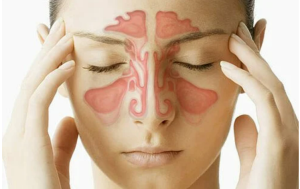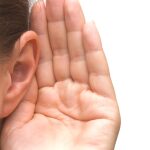Sore throat
A sore throat is a fairly common complaint, and there are many causes from post-nasal drip to more serious causes, like infection or tumor. Otolaryngologists are doctors who specialize in ear, nose and throat disorders. They are able to conduct a thorough examination with special scopes to visualize the throat and voice box, and evaluate the cause of your sore throat.
Could it be from allergies? Or a cold?
Post-nasal drip is when excessive mucus produced in the nose drains down the throat causing irritation. Allergies or an upper respiratory infection like the common cold can lead to post-nasal drip. A post-nasal drip from allergies can be seasonal or year-round. Allergy testing is beneficial to help identify which allergens are triggering your symptoms. Topical nasal steroid sprays and/or antihistamines can be helpful. If your symptoms persist even on medications, you may benefit from allergy therapy with allergy shots, allergy drops placed under the tongue or allergy tablets.
Could there be an infection causing my sore throat?
An infection of the tonsils, known as tonsillitis, is a common cause of a sore throat which is usually severe in intensity. It comes on quickly and is often accompanied by fever, pain when swallowing and swollen lymph nodes in the neck. Pus is usually present on the tonsils when it is bacterial. ‘Strep throat’ refers to the name of the bacteria (Streptococcus) that causes a common bacterial tonsillitis. This kind of throat infection should be treated with antibiotics; however a viral infection of the tonsils does not require antibiotic therapy. Both types of infections usually resolve within 7-10 days. A tonsillectomy may be necessary for patients who experience multiple episodes of tonsillitis each year.
Could it be related to my diet?
Acid reflux, also known as Gastroesophageal Reflux (GER) or Laryngopharyngeal Reflux (LPR), can cause recurrent sore throats. This is when acid from the stomach travels up into the esophagus and around the voice box causing inflammation. Many notice the sore throat is worse in the morning just after waking up, and this is due to acid reflux occurring during the night while you are sleeping. Heartburn and indigestion are not always present with LPR, and this is known as ‘silent reflux.’ Other symptoms include a dry cough, a sensation of mucus in the throat, throat clearing, hoarseness, and difficulty swallowing. Antacid therapy, such as Tums, Pepcid, Prilosec (Omeprazole) are a few of the over-the-counter medications that can help alleviate the sore throat caused by reflux when taken over a few weeks. It is important to treat acid reflux because it is a risk factor for cancer of the esophagus. Lifestyle changes are also important to help eliminate this problem causing your sore throat. Caffeine, chocolate, alcohol, spicy food, peppermints, acidic fruit juices are common food triggers of acid reflux. It helps to elevate the head of the bed when sleeping and to avoid eating late at night. A pH probe is a useful test to help diagnose and determine the severity of acid reflux. It entails having a small, thin probe placed into the nose and throat which can detect if acid is reaching the back of your throat. You can still eat, drink, and sleep normally while having the pH probe in place. This is a useful test since many patients have acid reflux at night when they are sleeping so they are unaware it is occurring.
Is this a symptom of something more worrisome?
Sometimes a sore throat is from a malignancy, or tumor, in the head and neck. If you have a sore throat that persists longer than 1-2 weeks, you should schedule an appointment with a medical provider. Certain symptoms, such as difficulty swallowing, a change in your voice, unexplained weight loss, or a lump in the neck raise a red flag of something more worrisome causing your sore throat, and you should see a medical provider immediately.
 Sinuses are air-filled cavities inside our skull that help circulate and humidify the air that we breathe and shape our skulls. They have outflow tracts that drain into our nose which can sometimes get blocked or inflamed. When this happens, it can lead to a sinus infection. Acute Sinusitis, aka acute rhinosinusitis, is inflammation of the nasal cavity and surrounding sinuses. This can be caused by both bacterial or viral infections.
Sinuses are air-filled cavities inside our skull that help circulate and humidify the air that we breathe and shape our skulls. They have outflow tracts that drain into our nose which can sometimes get blocked or inflamed. When this happens, it can lead to a sinus infection. Acute Sinusitis, aka acute rhinosinusitis, is inflammation of the nasal cavity and surrounding sinuses. This can be caused by both bacterial or viral infections.
 Hearing loss is the 3rd most common health problem in the United States. It currently affects 36 million Americans per day. There can be several reasons for hearing loss such as illness, certain medications, infection, trauma, allergies, or part of the aging process. It can also affect people of all ages. If you’re experiencing any of the signs listed below, it’s important to be further evaluated to prevent any further hearing loss and be cared for.
Hearing loss is the 3rd most common health problem in the United States. It currently affects 36 million Americans per day. There can be several reasons for hearing loss such as illness, certain medications, infection, trauma, allergies, or part of the aging process. It can also affect people of all ages. If you’re experiencing any of the signs listed below, it’s important to be further evaluated to prevent any further hearing loss and be cared for.  Fall is officially over and winter is here! With this change comes cold weather, chilly winds, and less humid air which means it’s the season of nosebleeds. Nosebleeds, also known as epistaxis, are most commonly caused by dry air. Nosebleeds occur when the blood vessels that line the inside of your nose break and bleed. Therefore, it’s important to keep the inside of your nose moist. Here are 5 helpful tips to prevent nosebleeds during this holiday season!
Fall is officially over and winter is here! With this change comes cold weather, chilly winds, and less humid air which means it’s the season of nosebleeds. Nosebleeds, also known as epistaxis, are most commonly caused by dry air. Nosebleeds occur when the blood vessels that line the inside of your nose break and bleed. Therefore, it’s important to keep the inside of your nose moist. Here are 5 helpful tips to prevent nosebleeds during this holiday season!